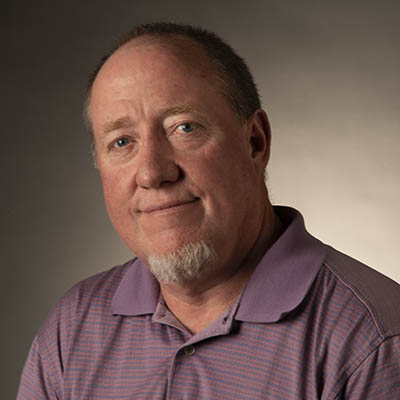Journalism Faculty Prepare Students to be Well-Rounded Storytellers, Equip Graduates to Thrive in a Wide Range of Careers Monday, June 1, 2020
"Journalism today requires practitioners who are able to do it all, starting with the basic skills to uncover objective truths and then to communicate those findings across multiple platforms and in diverse ways. The multiplatform journalism program ensures that Point Park graduates are capable of telling stories with printed and spoken words, visual images and all of the tools of multimedia and broadcast platforms. We are most interested in training and preparing students to be well-rounded storytellers, from start to finish."
What makes Point Park’s journalism program distinctive?
Point Park students learn by doing. Lectures and textbooks are always going to be an important part of higher education but Point Park students get the best of both worlds: classroom engagement and exciting hands-on learning. Journalism is a dynamic process and I love those "a-ha" moments when you see a student realize the connection between a theory we discussed in class and how that concept comes to life when it's applied to the process of their storytelling.
Tell us about the hands-on opportunities students have beginning freshman year.
Point Park has a robust student media and students can start publishing and broadcasting their work from the moment they arrive on campus. I'm especially proud of the upperclassmen, who assume the roles of friend and mentor, helping newcomers learn everything from the basics of operating equipment to the thrill of appearing on air. In addition to Point Park's state-of-the-art facilities, the instructors here appreciate the fact that we're working with true digital natives, so there's also a lot of innovative mobile and digital journalism techniques incorporated in the classroom. I find my freshmen broadcast students, in particular, really embrace these opportunities to use their smartphones to shoot and edit broadcast-quality stories. It's a great stepping-stone to move them into using more complex broadcasting equipment as they produce more sophisticated stories.
Tell us about the state-of-the-art Center for Media Innovation.
The Center for Media Innovation at Point Park University serves as a laboratory for the present and future of nonfiction storytelling, across every platform and iteration. Students and professionals work alongside each other to experiment with new technologies and strategies for creating and delivering content.
A perfect example occurred during the COVID-19 pandemic when the local NBC affiliate could no longer film in studio, and it turned to the CMI for help creating content; ultimately, we worked with the station to create a weekly business talk show via remote video chat that the station broadcast. This project included professionals from the station; the host, who is a former TV broadcaster; professional technicians from the CMI; and several students, who were intimately involved on the production end. We believe in hands-on learning that advances our overall understanding of how we communicate with broad audiences.
How will the multiplatform journalism program make students career-ready?
Journalism today requires practitioners who are able to do it all, starting with the basic skills to uncover objective truths and then to communicate those findings across multiple platforms and in diverse ways. The multiplatform journalism program ensures that Point Park graduates are capable of telling stories with printed and spoken words, visual images and all of the tools of multimedia and broadcast platforms. We are most interested in training and preparing students to be well-rounded storytellers, from start to finish.
Why should you choose to major in journalism at Point Park University?
Point Park’s School of Communication curricula has students working in various journalistic roles from the day they arrive. All multiplatform, all the time. Everyone will develop writing, photography, videography, advanced reporting and other skills through the most advanced journalistic curricula in this region.
Where have graduates of this program landed internships, co-ops and/or jobs?
The internships our students have landed range from the New York Times to the Pittsburgh Post-Gazette, to NBC in New York to the Country Music Channel, to just about every other entity in between. We have so many internship opportunities that we can’t fill them. Our internship program is another example of our hands-on, hit the ground running philosophy.
Virtually every student who works in Point Park media during their college career finds work in the journalistic world. Locally, our graduates are thriving in a wide range of careers. Two of our graduates were part of the Pittsburgh Post-Gazette’s Pulitzer Prize-winning coverage of the Tree of Life Synagogue tragedy a few years ago.
Student and Alumni Features
- Sabrina Bodon, New York Times
- Nicole Fuschino, NBC's TODAY Show
- Grads Part of Pulitzer Prize-Winning Team
Read more news and features.







